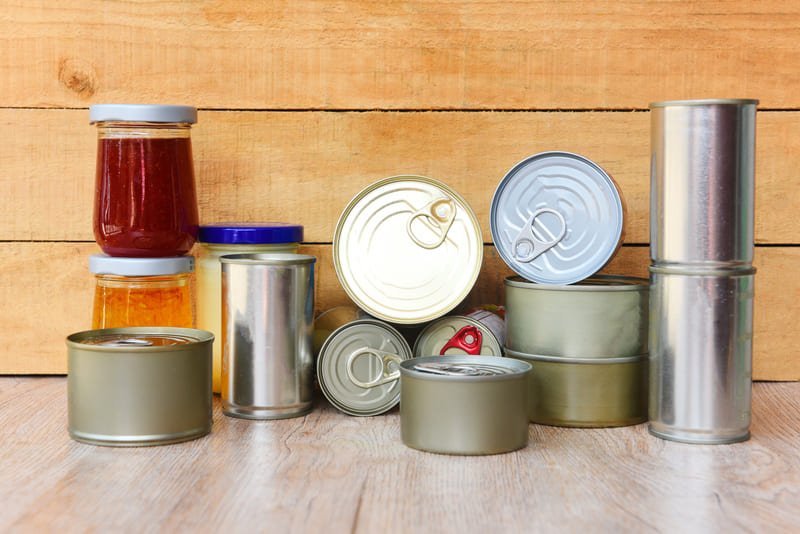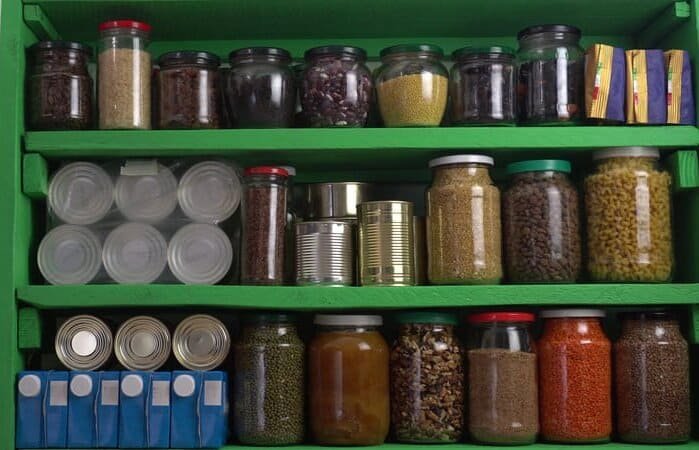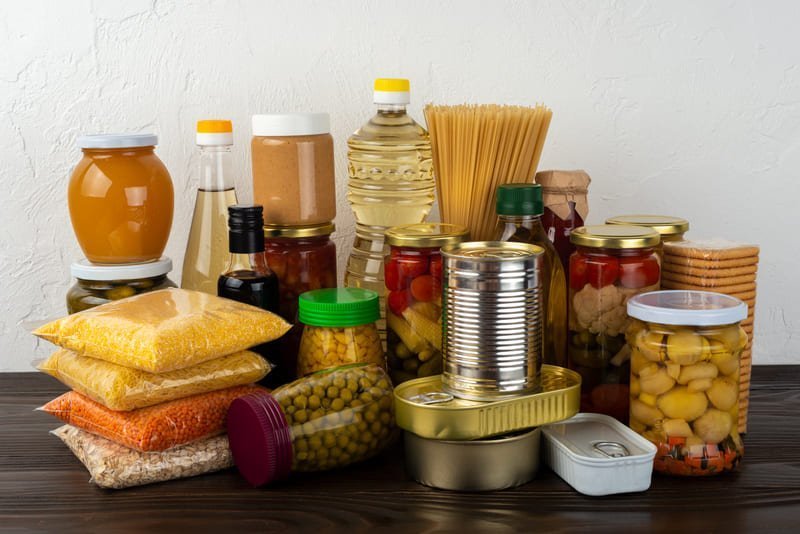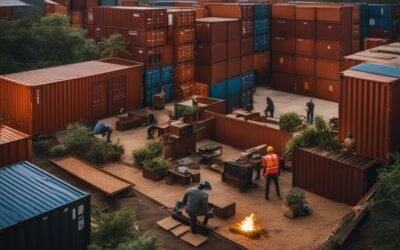Emergencies, whether they be natural disasters or disease outbreaks, can occur unexpectedly, leaving us without access to basic necessities such as food and water. It is essential to have an emergency preparedness stockpile to ensure the safety and well-being of our households. Experts recommend having at least a three-day supply of food and water stored in our homes, with one gallon of water per person per day. The food in our stockpile should consist of non-perishable items that do not require refrigeration and are low in salt. Additionally, our stockpile should include essential items like flashlights, a manual can opener, a radio, batteries, and copies of important documents.
When building our stockpile, it is important to consider the specific needs of our families. This includes considering any medical supplies, pet food, contact lens solution, or diapers that may be necessary. Storing our stockpile in a cool, dark place that is easily accessible during an emergency is ideal. We should also regularly check our supplies, discarding any expired or damaged items, and replenishing as needed. Gradually building our stockpile by purchasing a few items each time we go to the grocery store and taking advantage of sales and bulk discounts is a practical approach. Additionally, we can consider sharing the cost and storage space with a friend, co-worker, or neighbour who can serve as our “preparedness buddy.”
To stay organized, we should keep our supplies in sealed containers and rotate them regularly to ensure freshness. With proper planning and preparation, we can be ready for any emergency situation that may arise.
Key Takeaways:
- Build an emergency preparedness stockpile that includes at least a three-day supply of food and water.
- Choose non-perishable, low-salt foods that do not require refrigeration.
- Include essential items like flashlights, a manual can opener, a radio, batteries, and copies of important documents in your stockpile.
- Consider the specific needs of your family, including medical supplies, pet food, contact lens solution, or diapers.
- Store your stockpile in a cool, dark place that is easily accessible during an emergency.
Determining Your Stockpile Needs
Before you start stockpiling food and other supplies, it is important to determine your family’s specific needs.
Take a look at your household’s food consumption over a month and make a list of the items you regularly use. Consider the quantity and type of food you will need to sustain your family for at least three days or up to a week in case of an emergency.
Creating a stockpile list:
- Include a variety of non-perishable items such as grains, beans, canned fruits and vegetables, meats, and fats.
- Don’t forget to also stockpile health and beauty supplies like toiletries, medication, and cleaning products.
When creating your stockpile list, keep in mind the specific needs of your household. Is there anyone with special dietary requirements or allergies? Do you have infants or elderly family members who may require specific items?
It is not necessary to have a stockpile consisting only of pantry items; you can also utilize your freezer for storing perishables.
Start small and gradually build up your stockpile over time to avoid overwhelming your budget and available storage space. This will also allow you to assess and adjust your needs as necessary.
By determining your stockpile needs and creating a comprehensive list, you will be better prepared to face any emergency situation that may arise.
Understanding Shelf Life and Rotation
Understanding the shelf life and rotation of your stockpile is crucial for maintaining freshness and avoiding waste. While some items have long shelf lives, it’s important to regularly check and rotate your stockpile to ensure that the food remains safe to consume. Let’s explore how to effectively manage your stockpile to maximize its longevity and usefulness.
Most canned goods and pantry staples have expiration dates, but don’t fret if you come across items that have passed their designated date. As long as there are no signs of spoilage, many products can still be consumed safely. However, it’s always better to err on the side of caution and assess each item individually.
To keep your stockpile well-organized and efficient, it’s helpful to mark each item with the date it was sealed or packaged. This allows you to practice the “first in, first out” (FIFO) method, where you use the oldest items first and place newer items at the back of your stockpile. By doing so, you ensure that nothing gets forgotten or wasted.
Regularly going through your stockpile every six months to a year is a good practice. During this process, be sure to discard any expired or damaged items and replace them with fresh supplies. This rotation ensures that you’re always utilizing the freshest items in your stockpile and minimizing the chances of consuming expired products.
Creating a suitable environment for long-term food storage is also essential. Aim for a cool and dark storage area, as heat and light can degrade the quality of your stockpile. Proper storage conditions can help extend the shelf life of your food, ensuring its safety and taste.
| Key Points: |
|---|
| Regularly check and rotate your stockpile |
| Use the “first in, first out” method |
| Discard expired or damaged items |
| Store your stockpile in a cool and dark area |
By understanding shelf life and practicing proper rotation, you can ensure that your stockpile is always up to date and ready for use. Stay vigilant about checking expiration dates and maintaining a well-organized stockpile, and you’ll be prepared for any situation that comes your way.
Water Storage for Emergency Preparedness
 In addition to stockpiling food, it is crucial to have a sufficient supply of clean drinking water for emergencies. Each person in your household should have at least a two-week supply of water, with one gallon per person per day.
In addition to stockpiling food, it is crucial to have a sufficient supply of clean drinking water for emergencies. Each person in your household should have at least a two-week supply of water, with one gallon per person per day.
Store water in food-grade containers such as large drums or gallon-sized plastic jugs. Avoid using milk jugs as they are not designed for long-term water storage. Keep the water in a cool, dark area and change it out every month or every other month if possible.
Consider investing in a water filtration system like the Berkey Water Filter System for long-term water storage and purification. Having a reliable source of clean drinking water is essential for survival during emergencies when access to safe water may be compromised.
| Water Storage Containers | Advantages | Disadvantages |
|---|---|---|
| Large drums | Can store a large amount of water | Can be difficult to maneuver |
| Gallon-sized plastic jugs | Easy to handle and stack | May not hold as much water as larger containers |
Basic Skills for Self-Sufficiency
 In addition to building a stockpile, it is important to develop basic skills that contribute to self-sufficiency. Learning how to bake bread can save you money and provide a valuable skill for producing your own food. Start with simple recipes like homemade white bread or whole wheat bread and gradually expand your baking skills. Experiment with different ingredients and techniques to create delicious and nutritious bread from scratch.
In addition to building a stockpile, it is important to develop basic skills that contribute to self-sufficiency. Learning how to bake bread can save you money and provide a valuable skill for producing your own food. Start with simple recipes like homemade white bread or whole wheat bread and gradually expand your baking skills. Experiment with different ingredients and techniques to create delicious and nutritious bread from scratch.
Sewing is another useful skill to have, allowing you to repair clothing and create your own household items. Invest in basic sewing supplies like thread, needles, and fabric. By learning how to sew, you can prolong the lifespan of your clothing and reduce your reliance on store-bought items. Get creative and try sewing simple items like pillowcases, curtains, or even reusable shopping bags.
Other skills that can contribute to self-sufficiency include food preservation techniques like canning, dehydrating, and fermenting. These skills can help you make the most of your stockpile and extend the shelf life of perishable items. Consider stocking up on supplies needed for these skills, such as canning jars, dehydrators, and fermentation kits. With canning, you can preserve fruits, vegetables, and even homemade jams and jellies. Dehydrating allows you to create nutritious and delicious dried fruits, herbs, and jerky. And with fermentation, you can make your own sauerkraut, pickles, and kombucha.
By developing these basic skills, you can become more self-reliant and decrease your dependence on external resources. Embrace the rewarding journey of self-sufficiency and unlock a world of possibilities in baking, sewing, and food preservation.
Organizing and Managing Your Stockpile
 A well-organized and managed stockpile is crucial for efficient use and easy access to supplies. To ensure the longevity of your stockpile and protect it from moisture and pests, store your items in sealed containers or bins. Regularly check for any signs of pest infestation and address the issue promptly to prevent damage to your stockpile.
A well-organized and managed stockpile is crucial for efficient use and easy access to supplies. To ensure the longevity of your stockpile and protect it from moisture and pests, store your items in sealed containers or bins. Regularly check for any signs of pest infestation and address the issue promptly to prevent damage to your stockpile.
Implementing the “facing” method will help you maintain freshness and ensure older items are used first. Bring older items to the front of your stockpile and place newer items in the back. This simple practice will prevent any items from getting lost or expiring before being used.
Utilize storage spaces like closets, pantries, or basements to keep your stockpile in a cool and dark area. This will help preserve the quality of your supplies and prevent them from being affected by temperature fluctuations.
Maintaining a clean and organized stockpile is essential. Regularly sort through your supplies, discarding expired or damaged items, and replenishing them as needed. By staying updated on the current state of your stockpile, you can ensure you are always prepared for any emergency situation that may arise.
Stockpile Organization Tips:
- Label all your containers or bins to easily identify the contents.
- Group similar items together for efficient storage and retrieval.
- Create a stockpile inventory list to keep track of your supplies and their expiration dates.
- Consider using clear containers to easily view the contents without opening them.
- Rotate your stockpile regularly, using older items first to maintain freshness.
- Consider using storage solutions like shelves, racks, or stackable containers to maximize space.
- Ensure your stockpile is easily accessible during emergencies or power outages.
With a well-organized and managed stockpile, you can navigate any emergency situation confidently, knowing that your supplies are readily available and in prime condition.
Conclusion
Stockpiling food and essential supplies is a crucial aspect of smart household planning, ensuring you are well-prepared for emergencies and unforeseen events. By following the practical tips and guidelines provided in this article, you can create a well-stocked and well-organized stockpile that caters to your family’s specific needs.
Remember, stockpiling is a gradual process. Focus on acquiring non-perishable items with long shelf lives to maximize the longevity of your stockpile. Regularly inspect and rotate your supplies to maintain freshness and avoid wastage.
In addition to stockpiling food, consider developing basic self-sufficiency skills. Learning how to bake bread or sew can save you money and provide valuable resources during emergencies. Furthermore, stockpile clean drinking water and learn food preservation techniques to enhance your overall preparedness.
With thorough planning and adequate preparation, you can achieve food security and enjoy peace of mind for yourself and your loved ones. Don’t delay, start building your stockpile today and be prepared for any emergency situation that may arise.
FAQ
What is stockpiling food?
Stockpiling food is the act of accumulating and storing a supply of food and other essential items to prepare for emergencies or unexpected events.
Why is it important to have an emergency food supply?
Having an emergency food supply ensures that you and your family have access to food during times when normal food sources may be limited or unavailable.
How much food and water should I stockpile?
Experts recommend having at least a three-day supply of food and water for each person in your household. This includes one gallon of water per person per day.
What types of food should I include in my stockpile?
Choose non-perishable foods that do not require refrigeration and are low in salt. Include a variety of items such as grains, beans, canned fruits and vegetables, meats, and fats.
How do I determine my stockpile needs?
Take a look at your household’s food consumption over a month and make a list of the items you regularly use. Consider the quantity and type of food you will need to sustain your family for at least three days or up to a week in case of an emergency.
How do I ensure the freshness of my stockpile?
Regularly check and rotate your stockpile to ensure freshness and avoid waste. Mark each item with the date it was sealed or packaged and use the first in, first out (FIFO) method.
How should I store water for emergency preparedness?
Store water in food-grade containers such as large drums or gallon-sized plastic jugs. Keep the water in a cool, dark area and change it out every month or every other month if possible.
What skills are useful for self-sufficiency?
Skills such as baking bread, sewing, and food preservation techniques like canning, dehydrating, and fermenting can contribute to self-sufficiency and help you make the most of your stockpile.
How should I organize and manage my stockpile?
Keep your stockpile protected from moisture and pests by storing it in sealed containers or bins. Regularly check for signs of pest infestation and address the issue promptly. Utilize storage spaces like closets, pantries, or basements to keep your stockpile in a cool and dark area.












